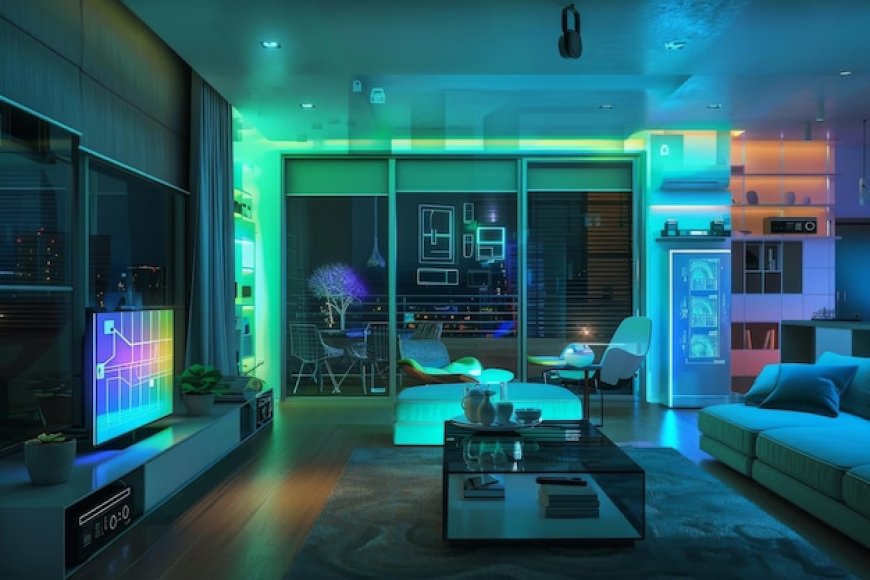Design Smarter, Not Harder: A Step-by-Step Guide to Using AI for Room Planning
Streamline your space planning with AI. Discover how AI room design tools simplify layout, style, and decor for smarter, faster home design.

From chaotic mood boards to countless hours spent tweaking layouts, interior design can often feel more overwhelming than inspiring. But todays digital transformation is redefining the design process. Enter AI room design tools intelligent platforms that allow you to ideate, visualize, and execute your room plans faster, smarter, and with minimal guesswork.
If youre looking to simplify your space planning process, CLAILA is a smart place to begin. Their intelligent tools leverage the latest in Home Design AI to help you design rooms that align with your lifestyle, taste, and goals. Lets explore how AI is transforming room planning, and how you can take advantage of it step by step.
Why AI is the Future of Room Planning
1. Accelerated Design Workflow
Manual room planning involves sketching layouts, researching trends, measuring spaces, and consulting with professionals. This takes time and expertise. In contrast, AI interior design tools automate much of this process. They can instantly generate layout suggestions, furniture placements, and even color palettes tailored to your preferences.
2. Data-Driven Personalization
Using machine learning algorithms, AI room design tools can analyze your preferences and lifestyle needs to recommend design options that suit you. This personalization is grounded in data from user behavior, design trends, and even lighting analysis enabling more functional and stylish results.
3. Budget-Friendly Design Trials
With AI, you can simulate and experiment with countless room arrangements and design ideas without physically moving furniture or purchasing dcor. Thats not just convenient its cost-effective. You can preview results before making a single investment.
? Resource: Harvard Graduate School of Design: How AI is reshaping the design process
Step-by-Step Guide to Using AI for Room Planning
Step 1: Define Your Goals & Room Requirements
Start by identifying the purpose of your space. Is it a productivity-focused home office, a minimalist living room, or a playful kids' room? Then, define constraints like available space, natural lighting, and your design style.
? Tip: Upload a photo or scan of your room to CLAILA's platform to let AI tools analyze space dimensions and lighting for optimal recommendations.
Step 2: Upload or Create a Digital Room Layout
Most Home Design AI platforms allow you to import existing floor plans or create digital mockups using drag-and-drop features. AI then interprets spatial constraints and automatically maps out potential design templates.
Step 3: Choose a Style with AI Guidance
Whether you prefer Scandinavian minimalism or boho chic, AI can scan millions of styles and pin down design directions that align with your taste. With style filters and predictive modeling, the tool tailors recommendations that look like you but better.
? Resource: Dezeen: Exploring AIs role in modern home design
Step 4: Experiment with Furniture and Decor Placement
This is where the fun begins. AI enables real-time experimentation by auto-populating your room with furniture based on your preferences and space dimensions. No more second-guessing whether the couch fits or if the bed should face east the algorithm has that covered.
Mid-process and unsure which design works best? Upload your preferences to CLAILA and let the system auto-suggest optimized layouts with visual mockups and interactive features.
Step 5: Visualize in 3D or Augmented Reality (AR)
One of the most game-changing aspects of AI interior design is the ability to step inside your new space virtually. Many platforms offer:
-
3D rendering: Get a lifelike view of how your space will look from every angle.
-
AR visualization: Use your smartphone to see your new room design overlaid in real-time on your actual space.
? Resource: Autodesk University: Leveraging AI and AR for interior planning
Step 6: Final Review & Smart Suggestions
Before wrapping up, AI can cross-verify room functionality based on factors like movement flow, lighting, accessibility, and design coherence. It may offer optimization tips such as:
-
Shifting a desk to maximize daylight
-
Replacing furniture for better scale
-
Suggesting eco-friendly materials
Tools like CLAILA even allow version comparisons so you can choose your best layout from multiple design paths.
? Resource: MIT Technology Review: Smart homes start with smart design
Real-Life Benefits of Home Design AI
-
Efficiency: Cut design time by over 70%.
-
Accuracy: Reduce spatial misjudgments with exact measurements.
-
Creativity: Explore ideas you may never have imagined.
-
Inclusivity: Design spaces accessible to all users, including children, seniors, and people with disabilities.
? Resource: ArchDaily: Inclusive and AI-enhanced interiors
When to Rely on Human Touch vs. AI
While AI room design can generate stunning and practical results, it's best used in conjunction with human insight. Interior designers can refine the emotional tone of a space, contextual cultural preferences, or select materials that AI may not fully understand.
CLAILA bridges this gap by offering AI-powered automation alongside the flexibility for creative user input ideal for tech-savvy homeowners, software developers, or even architects.
FAQs
Q1: Is AI interior design suitable for small apartments?
Yes. In fact, AI interior design tools excel in optimizing tight spaces by offering scalable furniture layouts, storage hacks, and visual spacing techniques.
Q2: Can I use AI for multiple rooms or an entire home?
Absolutely. Platforms like CLAILA allow you to plan entire home layouts by syncing data across rooms, ensuring design consistency and space efficiency.
Q3: Do I need design experience to use Home Design AI tools?
Not at all. Most Home Design AI platforms are beginner-friendly, using intuitive drag-and-drop interfaces and guided prompts to walk users through the process.
Q4: How do I ensure my AI-generated design is practical?
Start with accurate room dimensions, lighting conditions, and clear goals. Most platforms offer smart suggestions for furniture spacing, accessibility, and flow that can be reviewed before execution.
Q5: Can I export or implement the final design?
Yes. Many tools provide export features that let you download floor plans or order furnishing directly. Some also offer contractor-ready formats.
Final Thoughts
Designing your ideal space no longer requires years of expertise or mountains of mood boards. With AI room design tools, you can bring your vision to life with just a few clicks. Whether you're redesigning your studio apartment or planning an entire home makeover, these tools combine the best of creativity and computation.
Ready to start designing smarter? Explore room planning tools powered by CLAILA, and take your home transformation from dream to data-driven reality.
CTA
Unlock the potential of your space explore intelligent room design with CLAILA today.






































